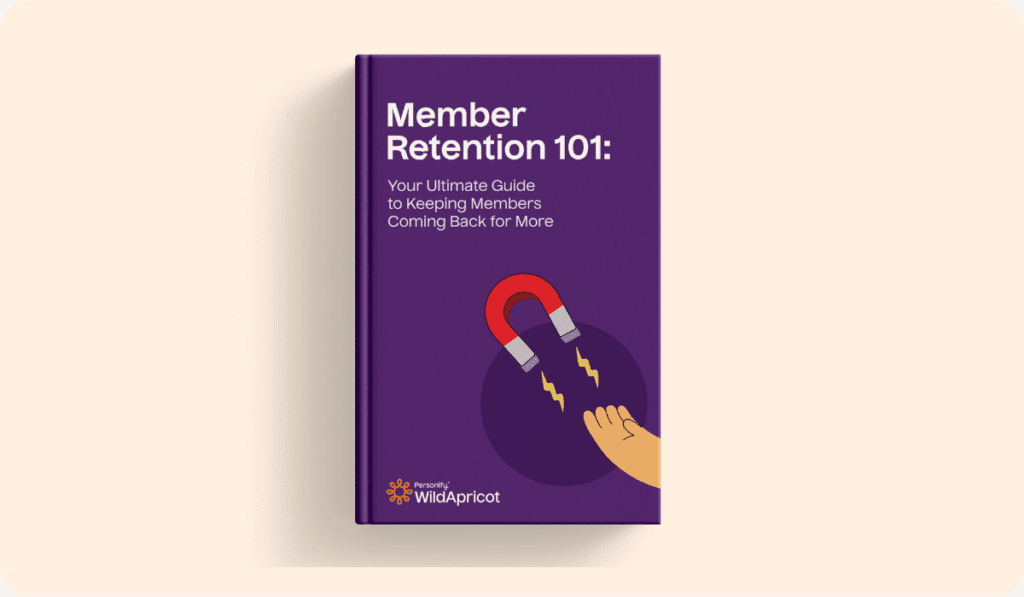Looking for ways to help your association flourish? Then it’s time to get creative with your association strategies.
Creating (and implementing!) a strong association strategy will help you:
- Act on your mission with ease
- Keep your stakeholders on board
- Gain and retain more association members
- Transform your members, partners and staff into a real community
Having common goals and agreements is the best way to secure the outcomes you’re looking for. But what is an association strategy, and how can you make it work for you?
Here’s everything you need to know about the ins and outs of association strategies, including 10 examples and 8 tips to get planning!
What is an association strategy?
An association strategy is an intentional plan that helps your organization grow and thrive. These strategies can be applied to a few different areas depending on the results you’re looking for.
For example:
- Your association mission is the guiding force of your organization. It gives you a set of values and goals to operate within. As you plan your association strategies, you should consistently check in to see if they’re aligning with your mission.
- Association management strategies are what you use to keep your organization up and running. Steady behind-the-scenes management is the key to putting out work that positively impacts your community.
- Association marketing strategies are what get that community involved with your mission! Setting up things like email and social media campaigns are how you reach your supporters and turn them into members.
- Membership engagement strategy is the key to gaining and retaining members. Your membership base will only grow if you actively work to engage and connect with them. An intentional strategy is what makes that possible!
With a combination of each of these association strategies, you can run your organization with clarity and confidence.
10 examples of association strategies
Now that you know the different categories of association strategies, you might be looking for some examples!
Your strategies could look like:
-
- Reinventing your organization through a rebrand or re-imagining of your mission.
- Expanding your impact or reach with a fresh marketing campaign.
- Seizing an opportunity like a potential sponsorship or exclusive event invitation.
- Working with public relations to connect with your community.
- Growing your membership through targeted campaigns.
- Becoming a leader in your space by offering opportunities to growing organizations.
- Tapping into association trends to stay ahead in your industry.
- Gaining more partnerships with a dedicated networking strategy.
- Engaging in advocacy by building government and grassroots relationships.
- Investing in association management software to improve the back-end experience for your administrative team.
These are just a few examples of association strategies you could use. Don’t be afraid to get creative and brainstorm ideas that better suit your organization.
Why does your association need a strategy?
Association management strategies set you up for success and take your organization to the next level. Achieving your desired outcomes is all about identifying them early and setting up a game plan. That’s what a strategy is all about!
According to the 2022 Membership Marketing Benchmarking Report 38% of associations reported membership growth in 2022. This didn’t happen by accident! Working with an intentional strategy is what sets successful organizations apart.
This is because association strategies enable you to:
- Achieve your mission. If you’re setting out to turn your mission into a reality, you need to do more than take shots in the dark. Really think about what your organization needs!
- Increase revenue and sustainability. Organizations need money to keep running. An association management strategy will help you set up the steps you need to stay funded.
- Deliver on promises to members and stakeholders. Your association is accountable to people outside of yourself. Using an association membership strategy makes sure that everyone’s needs get met.
8 steps to planning your association strategy
Now that you have some strategies in mind, let’s explore the steps you need to plan them out!
1. Let your mission lead you
The first part of starting an association is deciding what your mission is going to be. Your mission answers a very important question: why do we exist, and what are we offering to our members?
This mission should guide every part of your association strategy. When you’re feeling uncertain about the direction your strategies are taking, look back at your mission. The strategies should always be bringing you closer to achieving what you set out to do.
For example, if you’re running a beekeepers’ association, your mission might be “to make connections that strengthen the whole hive.” With this in mind, a great association marketing strategy might be a social media campaign. If members posed by their hives with a honeycomb cutout with their nonprofits’ name on it, their business could reach new audiences!
You don’t just want any association strategy—you want one that reflects your goals and values.
2. Get feedback and input
You don’t need to (and shouldn’t!) plan your association management strategies on your own. Even if you’re the project lead, it’s going to take a team to carry out your plans. Getting feedback early on will give you extra insight into what strategies will work best across the board.
For example:
- Consulting your finance department will help you get an idea of your strategy’s budget.
- All association marketing strategies should get approval from the marketing team itself!
- Your board of directors can offer feedback and unique supports.
Above all, it’s nice to ease the burden of having to come up with ideas on your own. Let your team work with you!
3. Conduct a SWOT analysis
A SWOT analysis is a quick way to get a clear look at what’s possible for your association, and where it currently stands in your greater industry.
- Your strengths show you what makes your association shine. What strategies can you really capitalize on based on what you’ve already got? For example, if you already have a strong community, a park event is a strategy that could bring in great publicity.
- Your weaknesses might not feel great to look at, but they show you where you’ll probably have less luck investing your time. If your team is currently understaffed, you don’t want to lean into a strategy that piles everyone with too much work.
- Your opportunities show what external factors could potentially help you out! If a new business really kicks off in the coming year, you might have a potential new partner.
- Your threats are the things that have the potential to hurt your organization. For example, when the COVID-19 pandemic hit, many organizations that were funded through in-person events struggled or shut down.
All information is good information! Once you have a clear idea of your organization’s standing, you can plan your strategy with confidence.
4. Have a short and long-term timeline
The strategies you implement are likely going to take some time to yield results. Making both short and long-term timelines keeps you on top of your current successes while also preparing for the future.
For example, if you’re working with an association member retention strategy, a short-term timeline could be used for a specialized campaign. At the end of the campaign, you can analyze how your member engagement has changed during this window.
A long-term timeline is more of an outline! It defines your big goals and ideals. The best part is, you can adjust your goals and expectations as you gather data from your short-term projects.
5. Develop an action plan
Everyone loves an action plan! Once you’re feeling confident in your goals, it’s time to set up the steps that will help you achieve them.
Your action plan should:
- Prioritize each of your steps. If you try to do everything all at once, it’ll be easy to get overwhelmed. Rank each task based on how urgent and important it is, and determine what needs to happen in what order. For example, before you kick off a social media strategy, you’re going to want to have a nonprofit marketing plan in place.
- Allocate your resources. It’s going to take time, labor and sometimes money to achieve the goals you lay out with your association strategies. Be sure to give everyone what they need to succeed.
- Assign responsibilities. Make sure people are confident in what projects they own. Ask your team members what it is they’re excited to do, and give them that work wherever possible. This is one quick way to get peoples’ best work!
6. Use technology to your advantage
Technology like association management software (AMS) is going to be your friend here. The right software can save you time on things like emails, website creation and looking up member information.
Association management software comes at multiple price points, and is well worth the energy it will save your team. Creating a strategy takes a lot of brain power—you’ll thank yourself later if you can also save effort on tedious tasks.
7. Have a written plan to guide you
Really—write things out! A written plan is a fantastic touchstone when you’re feeling uncertain about the direction your association strategy is going in.
For example, a membership marketing guide will lay out your association marketing strategy step-by-step and show you how your plans will achieve your goals in the long run. By preplanning your social media and email calendars, you can get ahead of the curve on your campaigns.
Plus, this document can be shared with other members of your team. You can even use workplace management software like Asana to make your plan more interactive. This will save you some time on emails and meetings, and help everyone stay up to date on their tasks.
8. Regularly measure your progress
Regularly measuring your progress is how you know if your strategy is actually working for you! It’s nice to imagine that once the strategy is in place everything will work out on its own, but the reality is that it will always need some attention.
Choose your success metrics early on. Is your goal to make more money for your organization? To get more visibility? To increase membership?
If you find that you’re succeeding in an unexpected area but not doing so hot in your initial goal, you can make a choice. Do you pivot your goal or pivot your strategy?
Measuring your progress is what enables you to make intentional choices with your strategy!
Getting strategic with your association management
So there you have it—everything you need to start implementing fresh association strategies in your organization! By setting clear goals, getting secure in your mission and planning for the future, you can help your association get to the next level.
Looking for some extra strategic support? Choosing the right association CRM can take some work off your plate so you can focus on the big picture.
WildApricot’s software can help you:
- Build a membership database
- Automate email campaigns
- Process payments
- Manage your networking events
- Create an association website
- And more!
Sign up for your 60-day free trial today!









